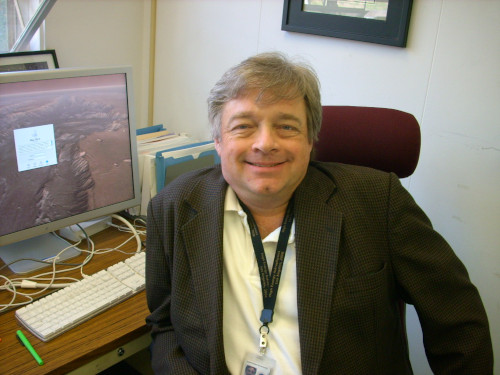 David L. Meier (Photo courtesy of David Murphy
David L. Meier (Photo courtesy of David Murphy
David L. Meier
Contributed by David Murphy
David Lawrence Meier was born in St. Louis, Missouri on July 7th, 1949, and was raised in Florissant, Missouri a suburb of St Louis. He graduated with a Bachelor's Degree in Physics in 1971 from the University of Missouri, Rolla (now known as the Missouri Institute of Science and Technology). Dave received his PhD in Astrophysics from the University of Texas at Austin in 1977 and did postdoctoral work at Cambridge and Caltech, after which he joined JPL in 1980. He spent the rest of his career at Caltech, until his retirement in 2014, after which he continued his astrophysics research as a visiting associate. He died on June 8th, 2023.
Dave's astrophysics research spanned several different areas. His early published work was on primaeval galaxies, working with Beatrice Tinsley and Rashid Sunyaev, but after coming to JPL he developed an interest in radio astronomy. He was a member of the Australian and JPL team that, in 1982, used six southern hemisphere radio telescopes as the first southern VLBI array to image 28 southern hemisphere radio sources at 2.3 and 8.4 GHz, during which process he developed a particular interest in the radio galaxy Centaurus A.
Around the same time, he became involved in the European-US QUASAT space VLBI mission concept. He added the ability to simulate orbiting spacecraft to the Caltech VLBI package program FAKE, enabling Space VLBI imaging simulations and UV-coverages to be produced, and thus enabling the science return from Space VLBI missions to be determined. Following NASA's decision to support both the Japanese-led VSOP and Russian-led RadioAstron space VLBI projects, Dave then developed scheduling software which involved optimizing the scheduling of both the space and ground assets for the two missions. Furthermore, he was delighted to be involved in the VSOP observations of Centaurus A.
In parallel with and complementing his interests in radio astronomy, Dave developed his life-long passion for black hole and accretion astrophysics, culminating in his 2012 book, Black Hole Astrophysics, The Engine Paradigm. He had several post-docs at JPL who worked with him on both radio astronomy and jet/accretion astrophysics and he established world-wide collaborations to pursue several aspects of these phenomena. While at JPL, he also worked on other groundbreaking projects, such developing supercomputers and optical interferometry mission concepts both in space and on the moon. Dave became a Senior Research Scientist in 2006, and was the Supervisor of the Evolution of Galaxies Group in Astrophysics starting in 2008. He was still very active in his retirement, and in 2019 was an author of an Annual Review of Astronomy and Astrophysics article on AGN relativistic jets.
Dave Meier will be remembered by his many colleagues as a bright scientist who left his mark in various fields of astrophysics, and was a very good friend to many.
![[IAU logo]](iau_wb_thumb.jpg)
![[URSI logo]](URSI-logo-thumb.jpg)
![[Karl Jansky at his antenna]](jansky_photo_02_thumb.jpg)
![[Reber's Wheaton antenna]](Reber_Telescope_Wheaton_thumb.jpg)
![[Dover Heights]](Dover_Heights_02_thumb.jpg)
![[4C telescope]](GB61-195_4C_telescope_thumb.jpg)
![[Ewen and horn antenna]](ewen_horn1s.jpg)
![[Dwingeloo, 1956]](Dwingeloo-1956-thumb.jpg)
![[Jocelyn Bell Burnell and Cambridge antenna used in pulsar discovery]](burnell2_thumb.jpg)
![[Lovell Telescope at Jodrell Bank]](site_1594_0001-500-334-20180316163019-thumb150.jpg)
![[Wilson, Penzias, and Bell Labs horn antenna]](wilson-penzias-horn_thumb.jpg)
![[6-m Millimeter Radio Telescope in Mitaka, Japan]](6m-thumb.jpg)
